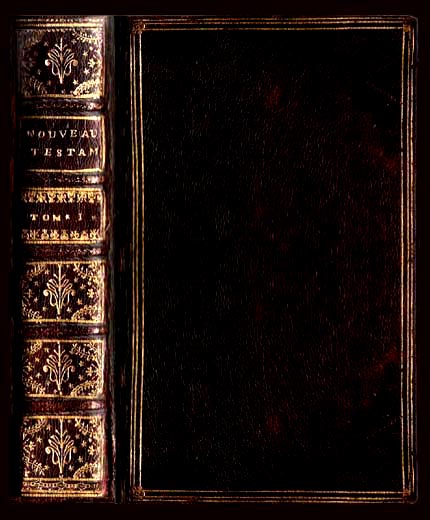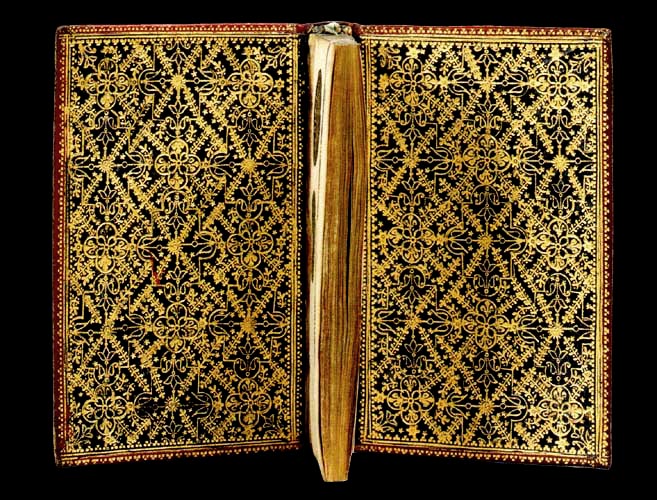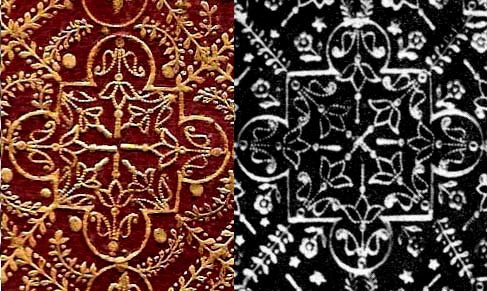In Comparative Diagram 3 - I have extracted from each doublure a matching fleuron, this exercise demonstrates that the imprints are of the same size and therefore one is assured that the scale of each doublure is the same. Even though the image is of quite a low resolution (200 dpi) we are still able count the segments in the stem between the lower and middle ring, being 8 in number with the top segments smaller and slightly angular in relation to the rest. A number of other details appear to confirm that these imprints probably derive from the same tool. (Even though the gold leaf has not disengaged from the ring centers of the NTM imprint)
In the next few pages we will address a number of different issues. Le Nouveau Testament de Mons is itself a highly interesting and controversial publication. The first edition appeared in 1667 and was censured by royal decree in the same year, and later condemned by Popes Clement IX in 1668 and Innocent XI in 1679. Hardouin de Péréfixe, Archbishop of Paris, issued an ordinance against this Testament, which was placed on the Index. Much like today, a banned book soon becomes big business, and dozens of counterfeit editions were produced to fill the demand for this famous Jansenist translation. Bettye Thomas Chambers identifies ten separate editions of the Port Royal New Testament, all with the Mons imprint and the date 1667: Bibliography of French Bibles. Seventeenth Century French-Language Editions of the Scriptures, (Geneva, 1994), nos. 1353-1362. Although these ten editions are nearly identical, there are differences among them, the most obvious being a variety of printers devices. It will be expedient therefore, to reproduce high resolution copies of the devices found in this particular copy of the first edition and perhaps verify its authenticity, hardly imagining for one minute, that Boyet would decorate a contrefaçon with such a luxurious binding.
|







